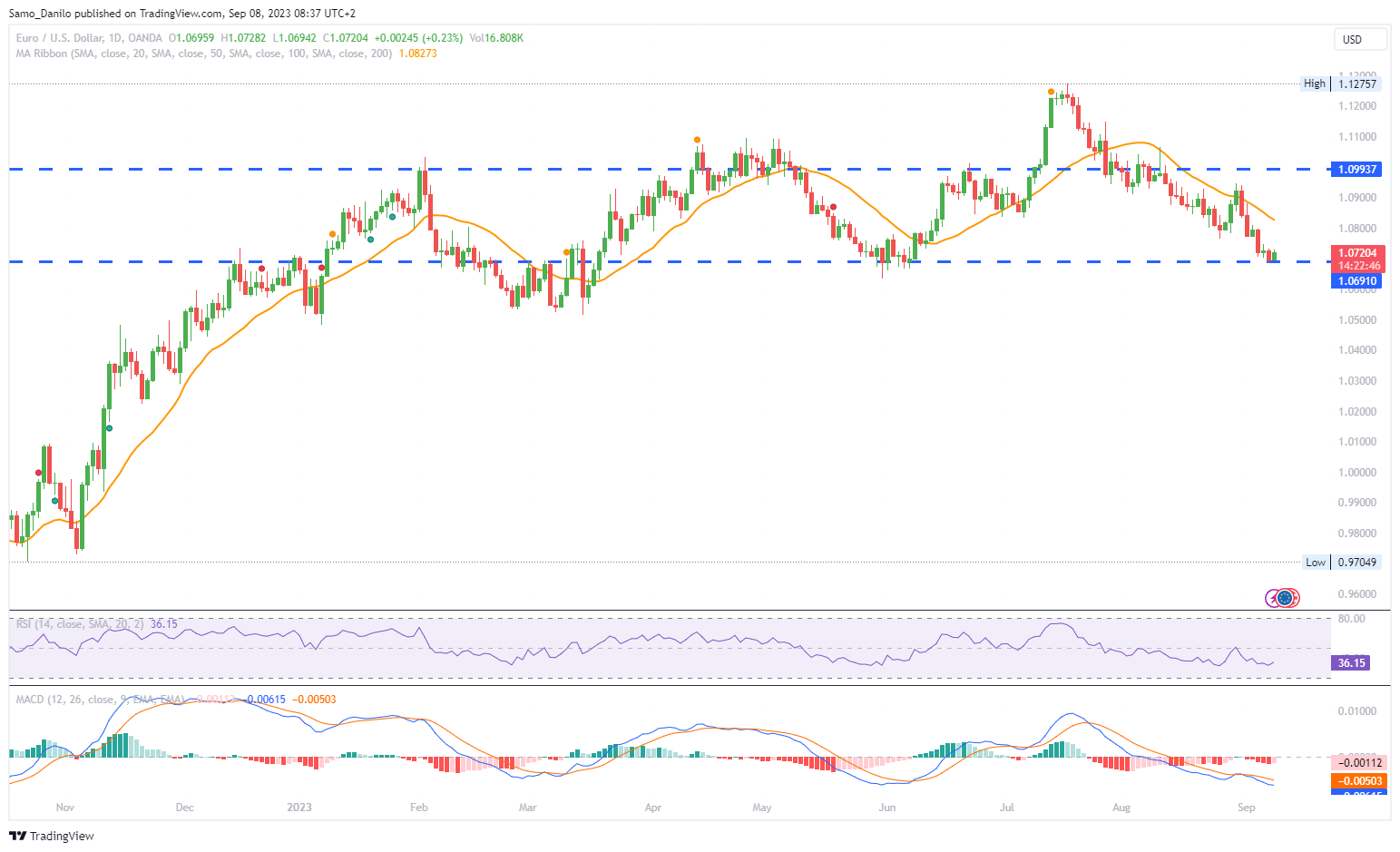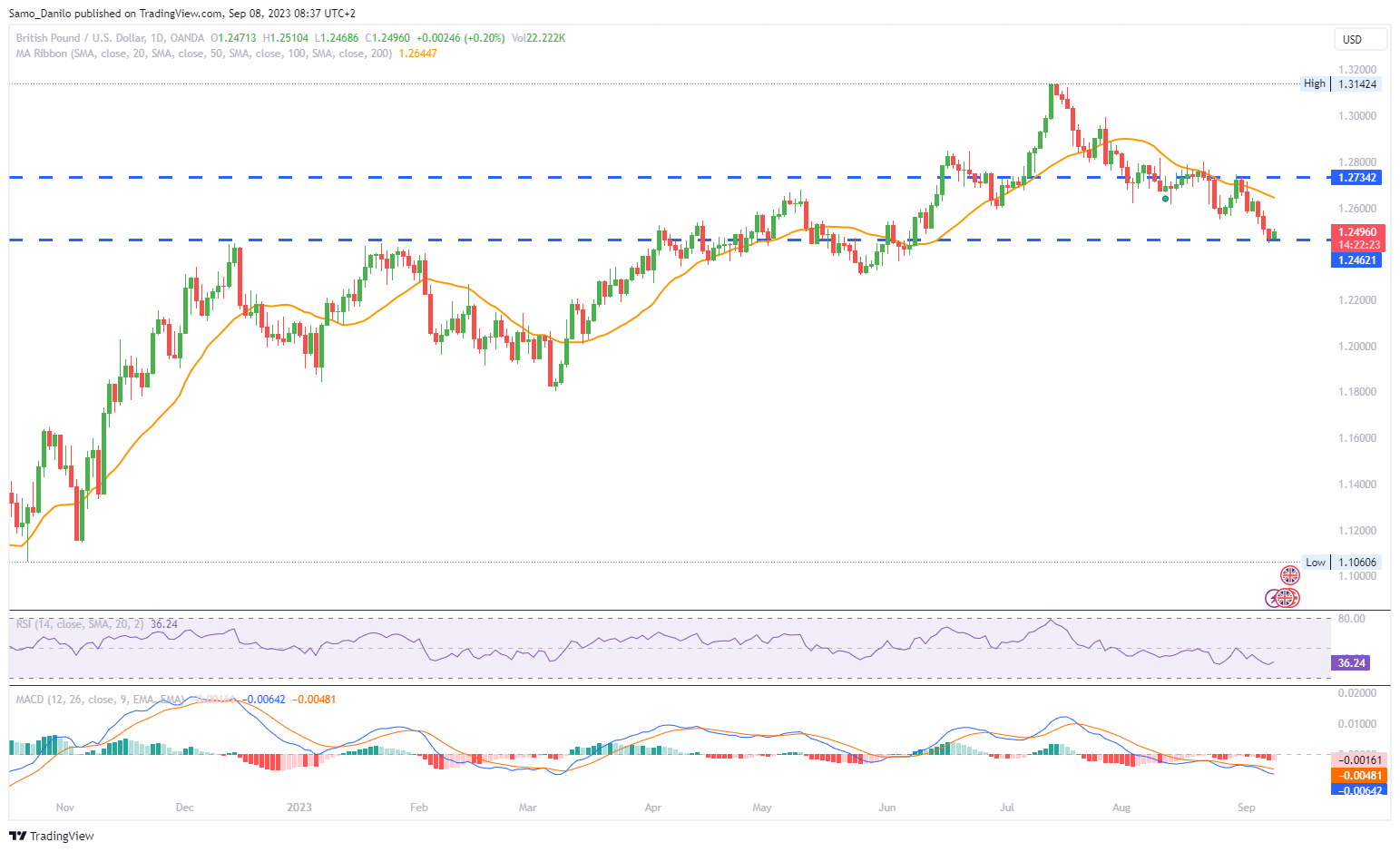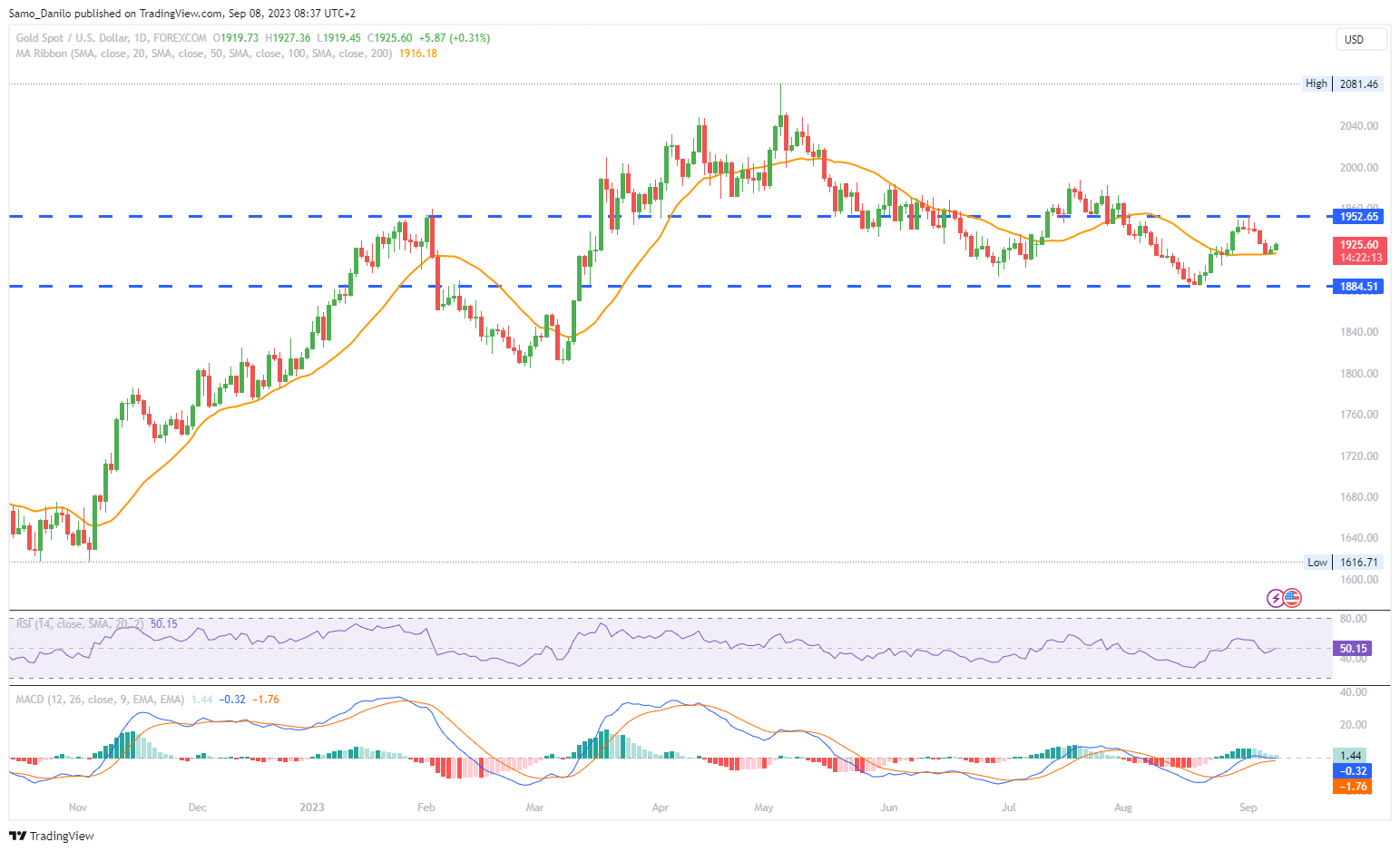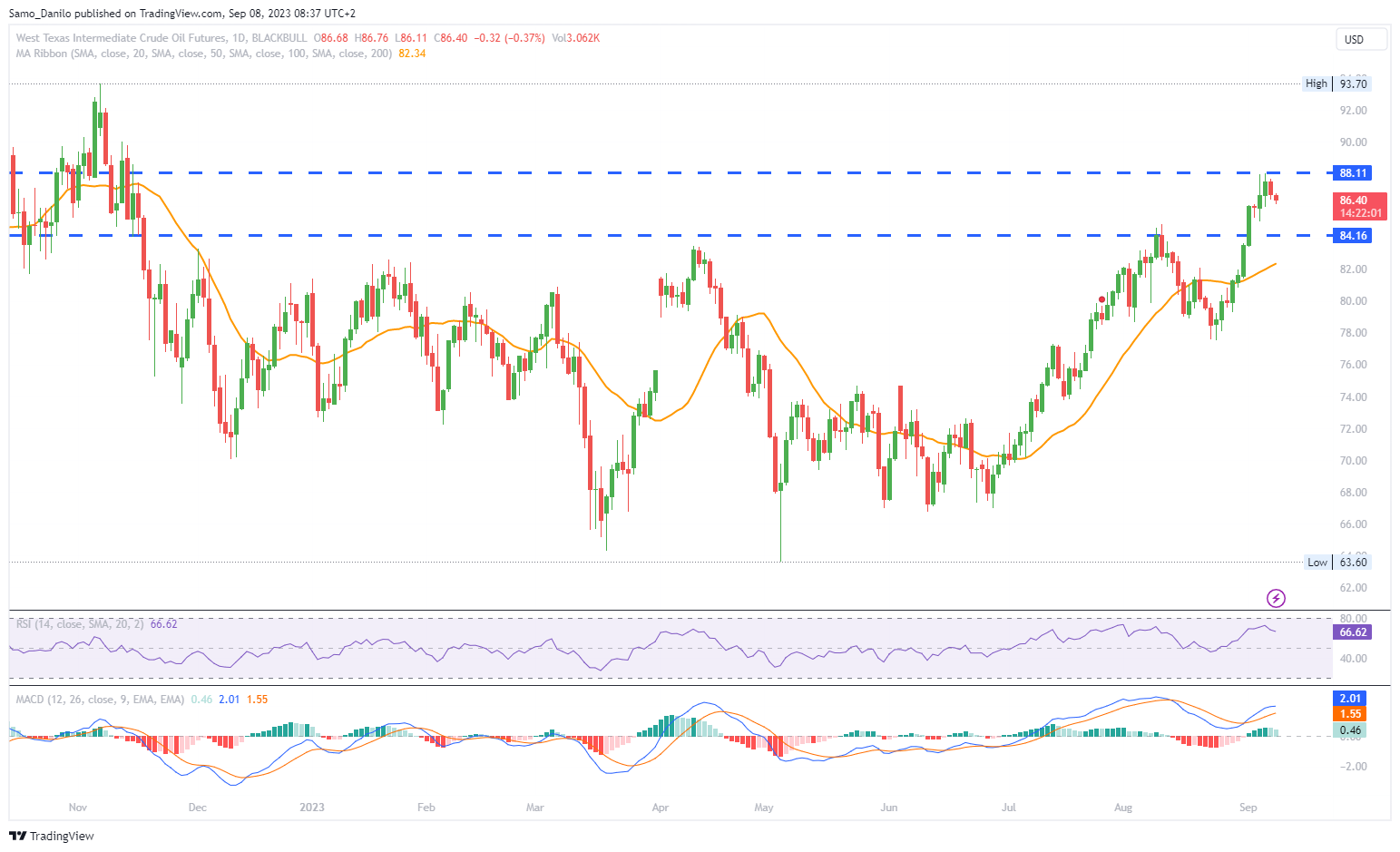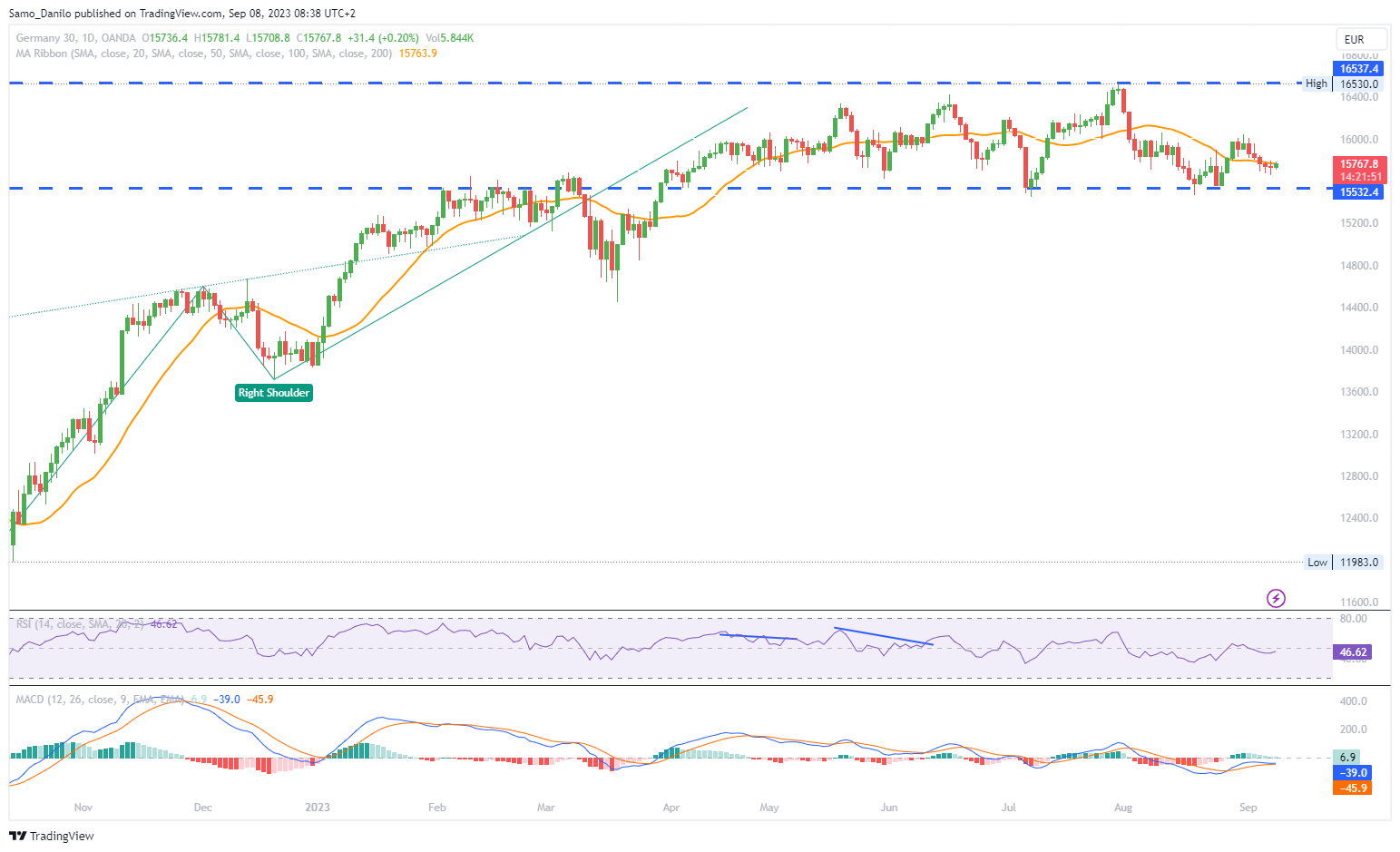EURUSD
- EUR/USD is making a recovery and trading above the 1.0700 level in the Asian session on Friday. This recovery is attributed to fresh selling pressure on the US Dollar, coupled with a decline in US Treasury bond yields.
- The EUR/USD had recently recorded its lowest daily close in three months, near the 1.0700 level. The prevailing bias in the market remains skewed to the downside, and the Euro continues to appear vulnerable, especially in the context of a strong US Dollar.
- Economic data from the Eurozone revealed a positive employment change of 0.2% during the second quarter, with no revisions from the initial figures. However, GDP was revised lower from 0.3% to 0.1%, indicating weaker economic growth. Additionally, Germany's Industrial Production dropped by 0.8% in July, surpassing expectations for a 0.5% decline.
- The economic numbers from the Eurozone point to a gloomy outlook, in contrast to the more robust US economy. Concerns regarding stagnation in the Eurozone versus a potential soft landing in the US economy are significant factors weighing on the EUR/USD pair.
Closing statement: EUR/USD is attempting a recovery in the Asian session after hitting recent lows. The Euro's vulnerability persists due to a strong US Dollar and weaker economic data from the Eurozone. The contrast in economic performance between the Eurozone and the US is contributing to the overall bearish sentiment for the EUR/USD pair.
GBPUSD
- GBP/USD faced renewed bearish pressure during the early European session on Thursday, pushing the pair to its lowest level in three months, below the key psychological level of 1.2500.
- While the near-term technical analysis suggests that the pair may be in oversold conditions, the current market sentiment, characterized by risk aversion, could make a strong recovery for GBP/USD challenging.
- The US Dollar (USD) gained strength against its currency rivals during the American session on the previous day. This strength was driven by the ISM Services PMI report, which indicated that business activity in the service sector continued to grow at a healthy pace in August.
- Cautious comments from officials at the Bank of England (BoE) regarding the policy outlook had a negative impact on Pound Sterling. These comments contributed to the downward pressure on GBP/USD.
- Employment data released on Thursday from the United States (US) showed that, as of September 1, Initial Jobless Claims stood at 216,000, indicating a decrease from the previous figure of 229,000.
| SMA (20) | Falling |
|
|
| RSI (14) | Slightly Falling |
| |
| MACD (12, 26, 9) | Slightly Falling |
|
Closing statement: GBP/USD faced bearish pressure, reaching a three-month low below 1.2500. The market sentiment is dominated by risk aversion, which could continue to weigh on the pair. The US Dollar's strength, driven by positive economic data, and cautious comments from BoE officials are contributing factors to GBP/USD's decline.
GOLD
- The U.S. Federal Reserve (Fed) is expected to maintain elevated interest rates for an extended period. Furthermore, there is anticipation in the market that the Fed will implement a 25-basis point (bps) interest rate hike during both its November and December meetings. This hawkish stance is impacting financial markets.
- The U.S. Dollar (USD) is continuing to gain strength, largely driven by a series of positive economic data points concerning the U.S. economy. The U.S. Dollar Index (DXY), which measures the USD against a basket of six other major currencies, is currently trading around 104.90. While it's slightly below its highest level since April, it remains strong.
- Traders are opting to lock in profits on their USD long positions ahead of significant events, including China's inflation data and the G20 leaders’ summit scheduled for Saturday. This suggests an element of caution in the market.
- It's noteworthy that the U.S. Federal Reserve (Fed) is entering its 'blackout period' from Saturday. During this time, the Fed refrains from making public statements ahead of its monetary policy meetings. This period prompts market participants to reposition their portfolios before the release of the crucial United States Consumer Price Index (CPI) data next week.
| SMA (20) | Neutral | ||
| RSI (14) | Neutral | ||
| MACD (12, 26, 9) | Neutral |
Closing statement: The XAU/USD (Gold/USD) market is influenced by the Fed's hawkish monetary policy stance, the strength of the U.S. Dollar, and traders' cautious behaviour ahead of key economic data releases and the Fed's blackout period. These factors collectively contribute to the current dynamics in the XAU/USD market.
CRUDE OIL
- Crude oil prices extended their losses on Friday, moving further away from the 10-month highs reached earlier in the week. These declines came amid concerns about China's slowing economy and a stronger U.S. dollar, which offset the gains triggered by supply cuts from major producers Saudi Arabia and Russia.
- Investors are anticipating that U.S. interest rates will remain at 20-year highs. This has led to a stronger U.S. dollar, making it more expensive to purchase crude oil in other currencies.
- China's overall exports and imports fell in August, reflecting the pressures of weak overseas demand and reduced consumer spending. These factors have been squeezing businesses in the world's second-largest economy.
- U.S. crude oil stockpiles have been declining for the fourth consecutive week. Inventories have decreased by more than 6% in the last month. This decline is attributed to oil refineries running at high rates to meet global energy demand.
- Despite its commitment to supply cuts, Russia is expected to increase its oil exports in September. This is due to Russian refineries beginning seasonal maintenance, which is slowing price gains.
| SMA (20) | Rising |
|
|
| RSI (14) | Slightly Falling |
|
|
| MACD (12, 26, 9) | Rising |
|
|
Closing statement: Crude oil prices have experienced losses driven by concerns about China's economic health, a stronger U.S. dollar, and expectations of continued high U.S. interest rates. While U.S. crude oil stockpiles have declined, Russia's increased exports are contributing to the broader supply dynamics influencing oil prices.
DAX
- The DAX index continued its five-day decline, reaching a level of 15,719 on Thursday. This extended period of decline is raising concerns in the market.
- A decline in German factory orders added to concerns about a potential recession. While the manufacturing sector represents less than 20% of the German economy, the slump in factory orders has drawn attention.
- German consumer prices increased by 0.3% on a monthly basis in August, resulting in an annual rise of 6.1%. This data indicates high and sticky inflation, which continues to put pressure on the European Central Bank (ECB) to consider further interest rate hikes.
- The Organization for Economic Co-operation and Development (OECD) reportedly called for the ECB to raise interest rates. This aligns with the pressure on central banks to address rising inflation.
- While DAX Futures indicate a positive open, the rising threat of a euro area recession will test buyer appetite. It's worth noting that there are no U.S. economic indicators on the calendar to fuel speculation about Federal Reserve rate hikes at this time.
| SMA (20) | Neutral |
| RSI (14) | Neutral |
| MACD (12, 26, 9) | Neutral |
Closing statement: The DAX's continued decline is influenced by concerns about German factory orders, inflationary pressures, and calls for rate hikes by international organizations like the OECD. These factors create uncertainty in the market, which is reflected in the DAX's recent performance.
